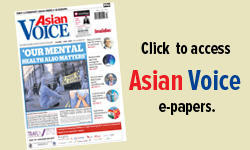Recently, I had the opportunity to explore a remarkable book titled ‘I AM?’, which I received in the post from my dear friend Gopichand P. Hinduja. From the moment I held it in my hands, I was captivated, not just by the depth of its content but also by the way it was written. This extraordinary book compilation was officially launched on 8 February 2025 by the Hon’ble Vice President of India, Jagdeep Dhankhar. Despite being comprehensive, the book is engaging, easy to absorb and filled with thoughtful enclosures that take the reader on an enriching journey through the wisdom of various religions. It highlights their essence in a harmonious and soothing way.
The book is the result of Gopichand Hinduja’s vision, a desire to bring together the virtuous teachings of the world’s great religions, illustrating how they have influenced and shaped humanity. His aim was to showcase their fundamental oneness, proving that although their names, approaches and historical evolutions may differ, they all ultimately point to the same universal truths.
What struck me most was how ‘I AM?’ deeply aligns with the philosophy and guiding principles of the Hinduja family. The book seeks to answer some of life’s most profound existential questions that have captivated humankind for centuries:
- What is the purpose of existence?
- What are the natural laws that govern life and the universe?
- What is the ultimate purpose of life?
- Who am I?
This book also highlights the universal truths that unite all faiths, showing religion as a bridge rather than a divide. It emphasises harmony, compassion, peace, and shared values across all beliefs.
Written in a clear and engaging style, ‘I AM?’ is for everyone, whether deeply religious, spiritually curious or simply exploring connections between faiths. In a divided world, it inspires compassion, inclusivity and wisdom.
Goodwill and inspiring messages from dignitaries
The book features profound goodwill messages from esteemed global dignitaries, each offering a powerful reflection on unity and shared wisdom:
- His Excellency Sheikh Nahayan Mabarak Al Nahyan, Minister of Tolerance and Coexistence, UAE
“He has presented a verse in his message, from the holy Quran that says, in translation “Had God willed, He could have made you a single community - but in order to test you in what He revealed to you. So, vie with one another in virtue and good works.”
- Swami Chidanand Saraswati, President, Parmarth Niketan, Rishikesh
“This book is the reflection of the teaching, truth, and inspiration we need in our world today. We may have different coloured skin, speak different languages, worship in different ways, but at the core, we are ONE. That core essence of each of us is Divine and as God is ONE, so are all the manifestations, embodiments and reflections of this Divine.”
- HH Mahant Swami Maharaj, Spiritual Head, BAPS
“Let us dwell on the common aspects of various religions to bring them closer to one another, and not on the differences which divide them.”
- Sri Sri Sugunendra Theertha Swamiji
“The book by presenting the quintessence of thirteen religions with their all-time relevance to mankind, speaks of the value of wisdom. Sanatan Dharma proclaimed this same truth in the following words: 'Ekam sat vipraaha bahudhaa vadanthi.' Even though the destination might be one, there can be many roads that lead to it. This is the goal of ‘I AM?’ and its ultimate Truth.”
A personal connection with the Hinduja family
My association with the Hinduja family dates back to November 1982, and over the decades, I have had the privilege of knowing all four brothers: Srichand, Gopichand, Prakash, and Ashok Hinduja on a personal level. Our friendship extends beyond social circles; we have collaborated on numerous events and initiatives aimed at fostering community engagement and social upliftment.
One of the qualities I admire most about the Hinduja family, apart from their immense wealth and success, is their remarkable tolerance towards criticism. In a world where many react defensively or aggressively to critique, the Hindujas stand apart. They not only accept criticism with grace but view it as an opportunity for growth. They believe that feedback, whether from journalists, intellectuals, or the public, is an essential part of leadership and responsibility.
This open-minded approach reinforces my belief that ‘I AM?’ is not just a collection of words; it is a genuine reflection of the Hinduja family's lifelong philosophy and commitment to unity.
At the heart of the book lies a powerful message. We are all one, regardless of the religious paths we follow. The concluding sections of ‘I AM?’ feature detailed comparative charts, illustrating the remarkable similarities between diverse religious traditions. These visual representations strengthen the idea that our perceived differences are merely superficial, while at the core, we share the same universal values of love, truth, and peace. It is a refreshing reminder that humanity is and always will be, one collective force bound by love, faith, and the eternal search for truth.
I wholeheartedly recommend this book to anyone who wishes to explore the beauty of interfaith harmony and the deeper truths of human existence. ‘I AM?’ is not just a book, it is a movement towards unity, tolerance and spiritual enlightenment.



